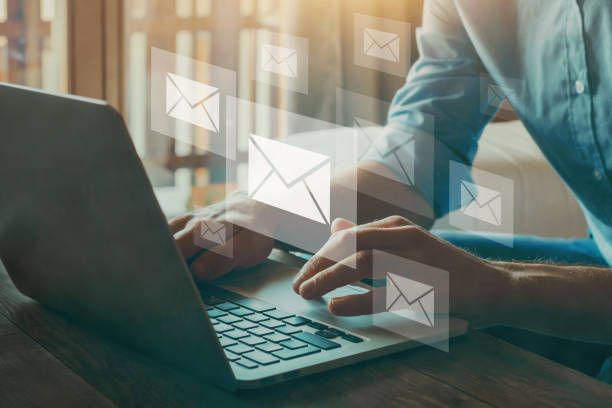In today's fast-paced digital world, email has become an essential communication tool. However, the frequency at which we check our emails can significantly impact our productivity and work-life balance. Striking the right balance between staying responsive and avoiding email overload is essential. In this comprehensive guide, we'll explore how often you should check your emails, share expert insights and best practices, and provide practical tips to help you manage your inbox effectively.
Finding the Right Email Checking Frequency
Determining how often you should check your emails depends on various factors, including your work responsibilities, communication expectations, and personal preferences. While there is no one-size-fits-all answer, here are some expert insights to consider:
- Work Requirements: The nature of your work and the level of urgency in your role can influence how often you should check your emails. If your job involves time-sensitive tasks or client interactions, you may need to check your emails more frequently. On the other hand, if your responsibilities allow for longer response times, you can establish a less frequent email checking routine.
- Email Volume: Consider the volume of emails you receive on a daily basis. If you receive a high volume of emails that require immediate attention, more frequent checking may be necessary. However, if you receive fewer emails, checking them less frequently can help you stay focused on other tasks.
- Communication Expectations: Understand the expectations of your colleagues, clients, or stakeholders regarding email response times. If there are specific response time expectations or service level agreements (SLAs), align your email checking frequency accordingly.
- Personal Workflow: Assess your own working style and preferences. Some individuals find it beneficial to check emails periodically throughout the day, while others prefer to allocate specific blocks of time for focused email management.
Based on these considerations, you can determine an email checking frequency that works best for you and your work context. Let's explore some best practices to optimize your email management and productivity.

Best Practices for Efficient Email Management

- Establish a Routine: Create a consistent email checking routine that aligns with your work requirements. For example, you might choose to check your emails at the start and end of the workday or allocate specific time slots during the day for email management. Consistency helps you stay organized and sets clear expectations for yourself and others.
- Use Email Filters and Labels: Leverage the features provided by your email client to automate email sorting and organization. Set up filters to categorize emails based on priority, sender, or subject. Assign labels or folders to help you quickly identify and locate specific types of emails.
- Set Clear Boundaries: Communicate your email availability and response times to colleagues, clients, and stakeholders. Setting clear expectations helps manage others' expectations and avoids unnecessary urgency.
- Avoid Constant Notifications: Disable email notifications or limit them to important emails only. Constant notifications can disrupt your focus and lead to frequent interruptions. Instead, schedule specific times to check your emails, allowing you to concentrate on important tasks without distractions.
- Practice Email Triage: When checking your emails, adopt an efficient triage approach. Quickly scan through the subject lines and sender names to identify urgent or important emails. Prioritize those emails for immediate response or action, while less critical emails can be addressed later or delegated.
- Avoid Multitasking: Multitasking can decrease productivity and increase errors. Instead of checking emails while working on other tasks, allocate dedicated time slots for email management. This way, you can give your full attention to emails and respond more effectively.
- Utilize Email Templates and Canned Responses: Save time and maintain consistency in your email responses by creating templates or using canned responses for commonly asked questions or routine communication. This eliminates the need to compose similar emails repeatedly.
Frequently Asked Questions
Q1. Should I check my emails first thing in the morning?
A1. While it may be tempting to check emails first thing in the morning, it's generally recommended to focus on high-priority tasks or deep work before diving into email. Start your day with important tasks and allocate specific times later in the day for email management.
Q2. How often should I check my personal emails?
A2. The frequency of checking personal emails depends on your personal preferences and the volume of personal communications you receive. Designate specific times during the day or allocate a dedicated slot to manage personal emails efficiently.
Q3. Is it necessary to respond immediately to every email?
A3. Not every email requires an immediate response. Prioritize your responses based on urgency and importance. Setting clear expectations with your contacts regarding response times can help manage their expectations and reduce the pressure to respond immediately.
Q4. How can I manage email overload?
A4. To manage email overload, implement effective email management strategies such as email filters, labels, and prioritization. Regularly declutter your inbox by archiving or deleting unnecessary emails. Consider using tools like email productivity extensions or email management apps to streamline your workflow.
Q5. Should I check my emails during non-working hours?
A5. It's generally advisable to maintain a healthy work-life balance by disconnecting from work-related activities during non-working hours. However, if your role demands immediate response or you have specific commitments, you may need to check emails selectively during non-working hours.
By applying these best practices and adapting them to your unique work environment, you can strike a balance between staying responsive to emails and maintaining your productivity. Remember, the goal is to use email as an effective communication tool while ensuring that it doesn't consume an excessive amount of your time and attention.

